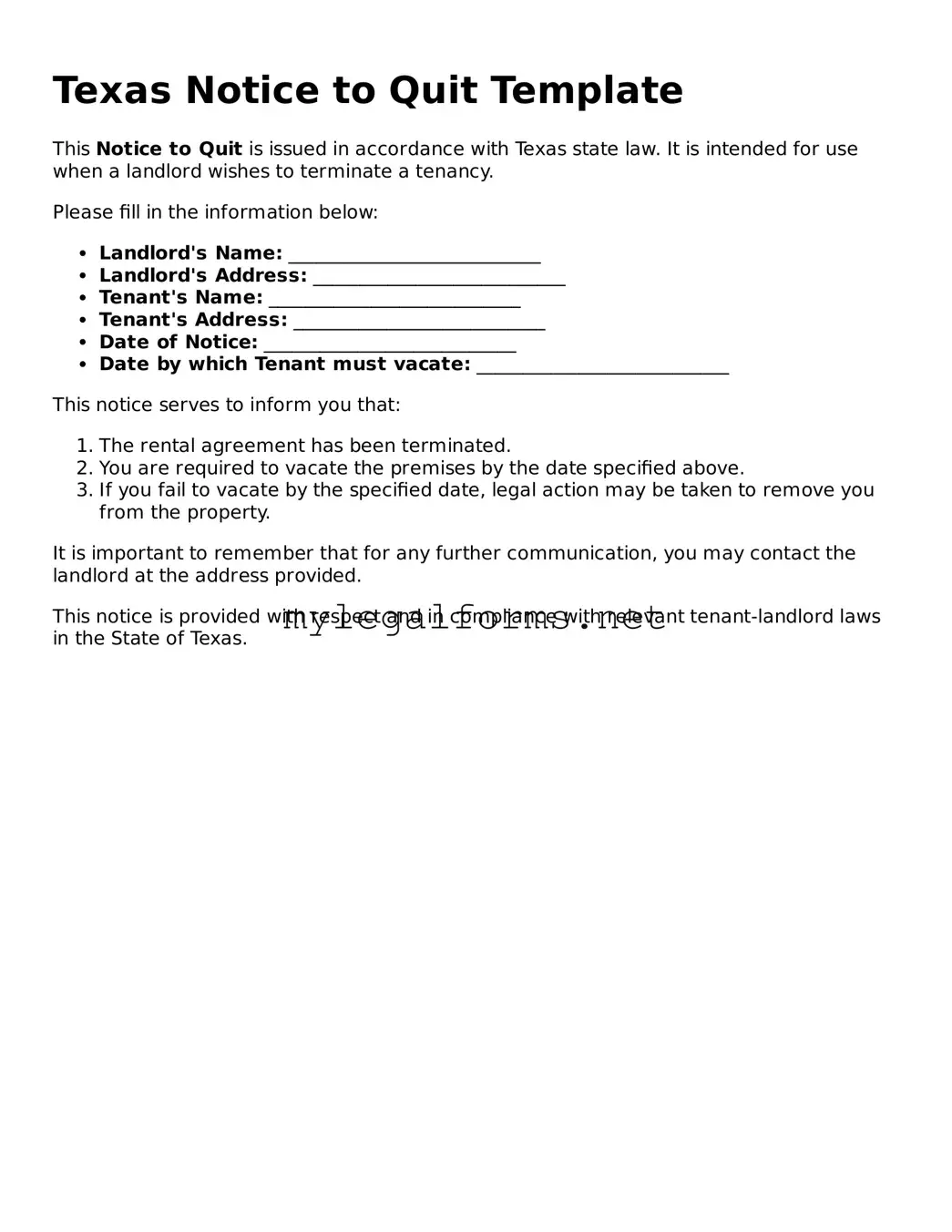Filling out the Texas Notice to Quit form can be a straightforward process, but many people make common mistakes that can complicate matters. One frequent error is failing to include the correct address of the rental property. It’s crucial to provide the full and accurate address where the tenant resides. Omitting even a small detail can lead to confusion and may delay the eviction process.
Another mistake involves not specifying the reason for the eviction. While it might seem unnecessary, stating the reason—such as non-payment of rent or lease violations—can clarify the situation. This detail helps ensure that the tenant understands the grounds for the notice and can respond appropriately.
Many individuals also forget to sign and date the form. A Notice to Quit without a signature is not valid. This oversight can render the entire document ineffective, leaving landlords without a legal means to proceed with eviction.
Some people overlook the importance of delivering the notice properly. The Texas law requires that the Notice to Quit be delivered in specific ways, such as personally handing it to the tenant or posting it on the property. Failing to follow these guidelines can lead to disputes about whether the tenant actually received the notice.
Additionally, using vague language can create problems. The notice should be clear and concise. Ambiguity can lead to misunderstandings, and the tenant might not take the notice seriously if it isn’t straightforward.
Incorrectly calculating the notice period is another common error. Texas law generally requires a three-day notice for non-payment of rent, but other violations may have different requirements. Not adhering to the correct timeline can jeopardize the eviction process.
People sometimes forget to keep a copy of the Notice to Quit for their records. Having a copy is essential for future reference and can be invaluable if the situation escalates to court. It serves as proof that the notice was issued and can help establish a timeline of events.
Failing to follow up after issuing the notice is another mistake. Once the notice is delivered, landlords should monitor the situation. If the tenant does not respond or rectify the issue, the next steps in the eviction process must be initiated without delay.
Lastly, not seeking legal advice can lead to significant issues. While the form may seem simple, the eviction process can be complex. Consulting with a legal expert can provide clarity and ensure that all steps are followed correctly, protecting the landlord’s rights throughout the process.
